Telling Them Apart: Atlas Caboose Styles
Published: 2016-08-26 - By: gdm
Last updated on: 2021-02-02
Last updated on: 2021-02-02
visibility: Public
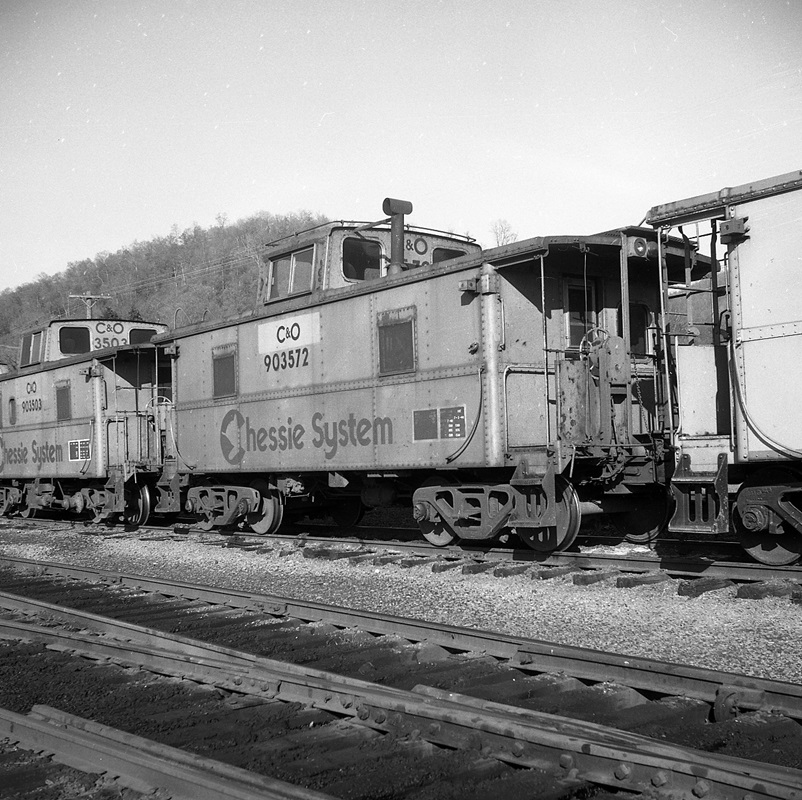
Atlas Model Railroad has been making cabooses for as long as they have been making N Scale trains – since 1967. More than fifty years later, they now have a whole range of different caboose body styles: Traditional Cupola, Extended Vision Cupola, NE-6 Caboose, NE-5 Caboose, Offset Cupola Caboose, C&O Cupola Caboose and Bay Window Caboose. Sometimes, these train cars can be hard to distinguish from one another. We’ve written this blog to help the Atlas collector differentiate these models. This is not a review of the various models, but rather it is a survey.
Offset Cupola Caboose
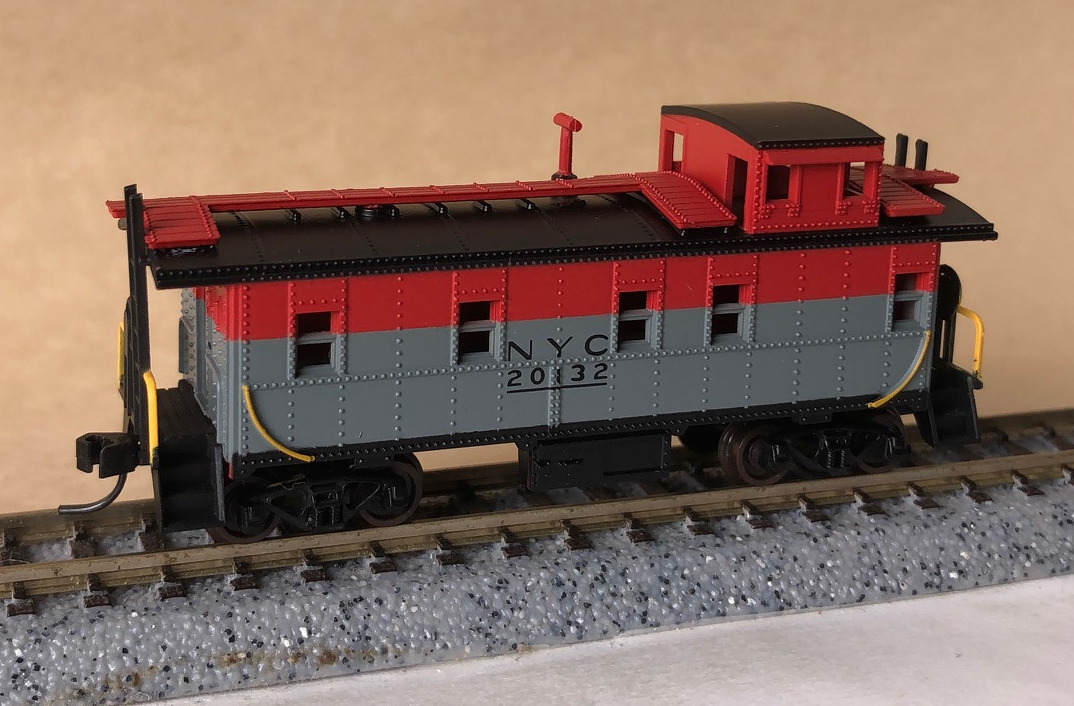
The "35" series "Offset" Cupola Caboose is an early Atlas body style introduced in 1967. Its cupola is located towards one end of the body hence the designation "Offset". This body style has a roofwalk. It has five windows on one side and three on the other as well as two separated windows on each side of the Cupola. It has ladders on each end, which do NOT loop over the ends onto the roof. This body style represents the "low budget" offering. It is an older tooling and lacks glazing on the windows and hence is cheaper to manufacture than the more modern body styles.
Bay Window Caboose (Rivarossi)
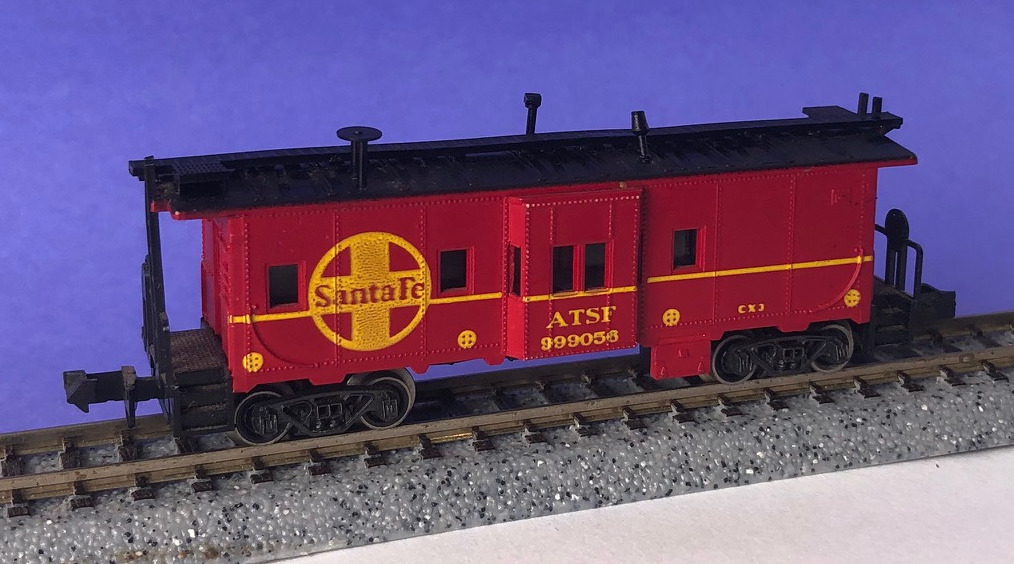
This model does not have a series number as it was only produced in 1969 by Rivarossi under contract with Atlas. There are only 7 different models that used this mold, though Atlas item #2435 comes in a bunch of different variations. It is clearly distinguishable from the other models in that it does not have a cupola.
Bay Window Caboose (Walthers)
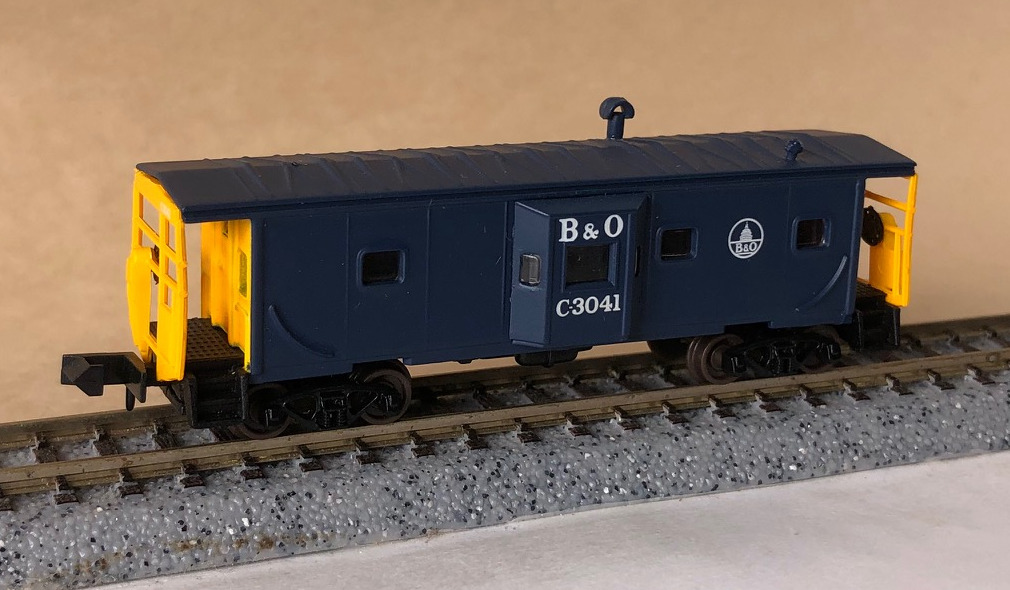
Atlas acquired this tooling from Walthers in November of 2018. It is similar to the earlier Rivarossi tooling, but has some distinct differences. Look closely at the Bay Windows to see how they are configured.
Extended Vision Cupola
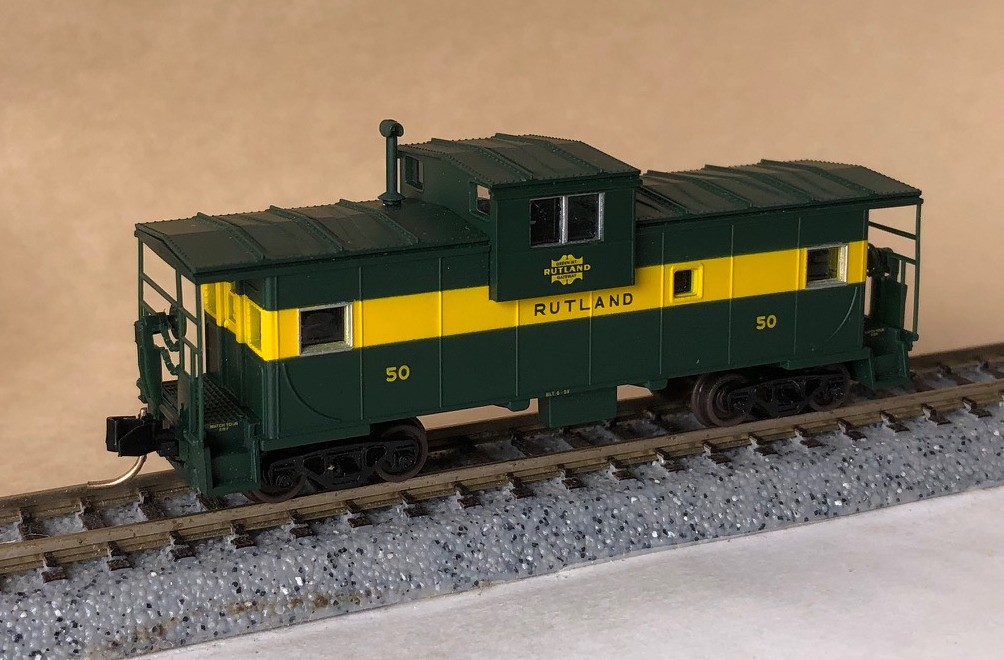
Atlas released the "30" series extended vision caboose in 1996. This model is very similar to the "43" series cupola caboose in most respects. It can be easily distinguished from the standard cupola caboose in that the cupola is wider than the body on the "30" series - hence the name "Extended Vision." This model may or may not have "loop-over" ladders and a roof-walk.
Traditional Cupola
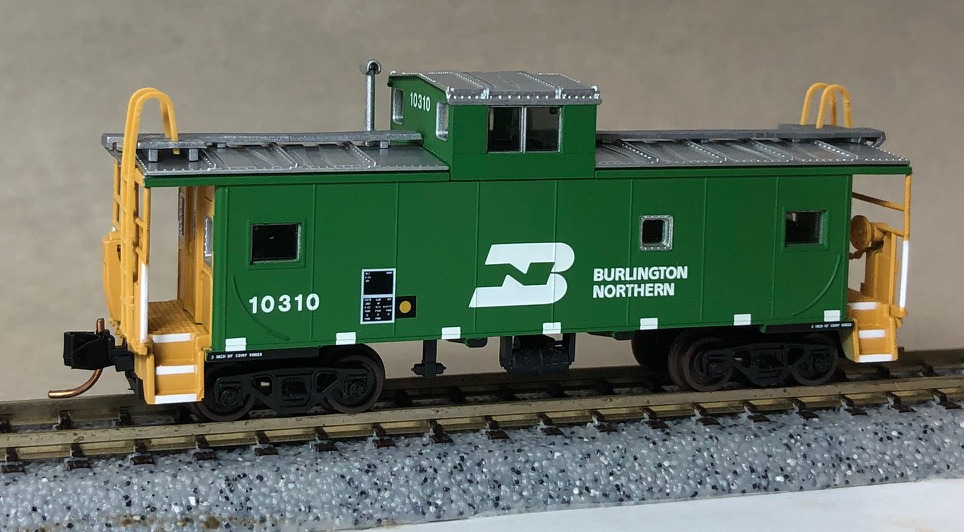
The Atlas "43" series cupola caboose has been around since the early 2000's. Essentially it is the same body style as the "30" series with the cupola located slightly off-center. The primary difference is that the sides of the standard cupola are flush with the sides of the body of the car. It carries three windows on each body side, two larger ones at the ends and a smaller one in the middle. The cupola carries a double-window on each side. Just like the "30" series, this body sometimes has a raised roof-walk and "loop-over" ladders but not always.
NE-6 Caboose
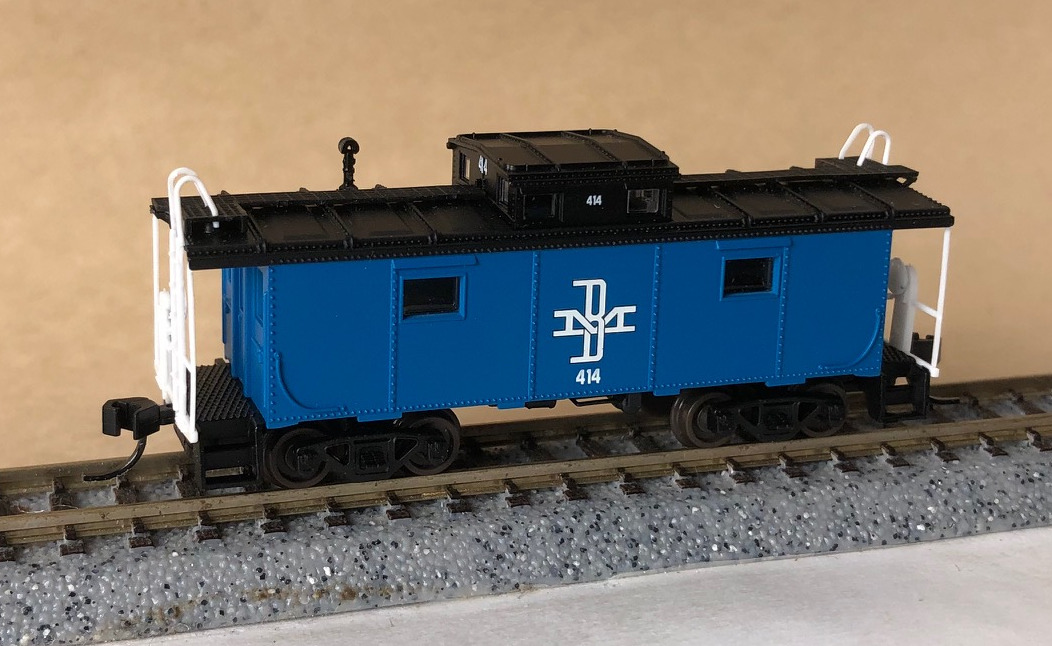
Atlas introduced the "33" series caboose in 2004. Their cupola may be found in the center of the body, and they feature two windows on each side supplemented by two separated windows on each side of the cupola. They are hard to distinguish from the "39" series C&O cabooses, but the NE-6's are shorter and the cupola has three panels on the roof. Furthermore, the cupola on the NE-6 is more squat than the one on the C&O.
NE-5 Caboose
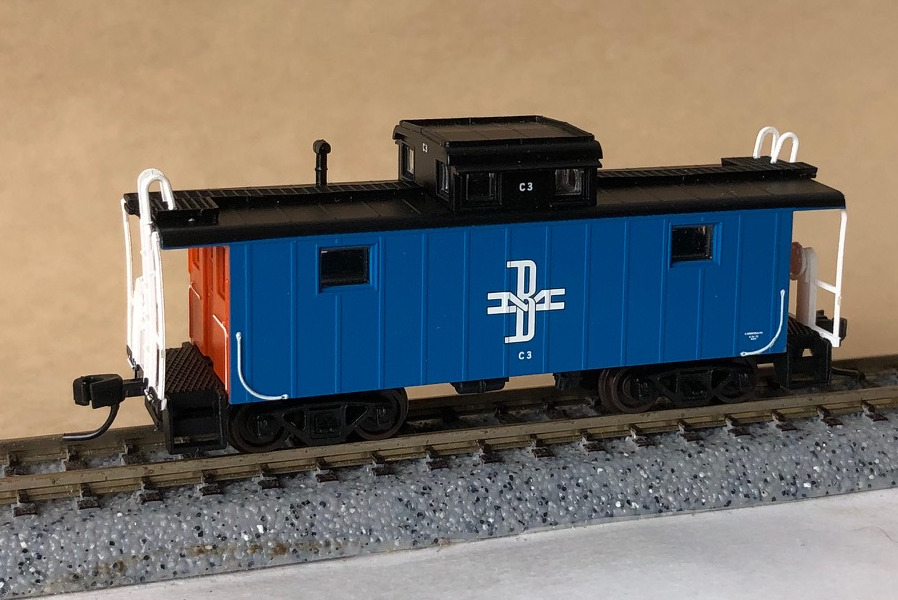
Atlas introduced the NE5 series caboose in 2016. Just like with their earlier NE6 caboose, their cupola may be found in the center of the body, and they feature two windows on each side supplemented by two separated windows on each side of the cupola. They are hard to distinguish from the NE6 and C&O cabooses. If you examine the riveting on the roof, or examine the number of panels on each side, you can see there are distinct differences between this tooling and the other two.
C&O Cupola Caboose
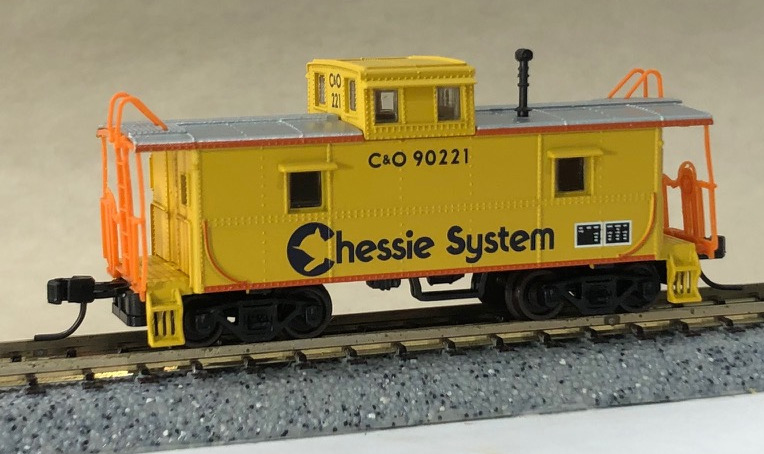
Atlas introduced this model in 2008. The "39" Series caboose carries a cupola almost in the exact middle of the body. It does NOT have a raised roofwalk like the NE-6. It does have ladders that "loop over" the roof. It carries two large windows on each side as well as two separated smaller windows on each side of the cupola. The smokestack is taller than the one on the NE-6.
About Cabooses
Before delving into the different Atlas caboose body styles, here’s some background information on this type of train car. Introduced in the 1840s, the caboose became a fixture at the rear of freight trains traveling across America. It functioned as a conductor’s “rolling office” as well as sleeping and cooking quarters for the rear train crew. Tools and supplies (lanterns, flags, and oil cans) were also stored in these cars. The cupola portion (small window projection) of the caboose’s roof was introduced in the 1890s and created to help the rear train crew (conductor, brakemen and flagman) observe their train in motion. This lookout post made it possible to spot shifted freight loads, damaged or dragging equipment or cargo and overheating axles.The Atlas Models

The "35" series "Offset" Cupola Caboose is an early Atlas body style introduced in 1967. Its cupola is located towards one end of the body hence the designation "Offset". This body style has a roofwalk. It has five windows on one side and three on the other as well as two separated windows on each side of the Cupola. It has ladders on each end, which do NOT loop over the ends onto the roof. This body style represents the "low budget" offering. It is an older tooling and lacks glazing on the windows and hence is cheaper to manufacture than the more modern body styles.

This model does not have a series number as it was only produced in 1969 by Rivarossi under contract with Atlas. There are only 7 different models that used this mold, though Atlas item #2435 comes in a bunch of different variations. It is clearly distinguishable from the other models in that it does not have a cupola.

Atlas acquired this tooling from Walthers in November of 2018. It is similar to the earlier Rivarossi tooling, but has some distinct differences. Look closely at the Bay Windows to see how they are configured.

Atlas released the "30" series extended vision caboose in 1996. This model is very similar to the "43" series cupola caboose in most respects. It can be easily distinguished from the standard cupola caboose in that the cupola is wider than the body on the "30" series - hence the name "Extended Vision." This model may or may not have "loop-over" ladders and a roof-walk.

The Atlas "43" series cupola caboose has been around since the early 2000's. Essentially it is the same body style as the "30" series with the cupola located slightly off-center. The primary difference is that the sides of the standard cupola are flush with the sides of the body of the car. It carries three windows on each body side, two larger ones at the ends and a smaller one in the middle. The cupola carries a double-window on each side. Just like the "30" series, this body sometimes has a raised roof-walk and "loop-over" ladders but not always.

Atlas introduced the "33" series caboose in 2004. Their cupola may be found in the center of the body, and they feature two windows on each side supplemented by two separated windows on each side of the cupola. They are hard to distinguish from the "39" series C&O cabooses, but the NE-6's are shorter and the cupola has three panels on the roof. Furthermore, the cupola on the NE-6 is more squat than the one on the C&O.

Atlas introduced the NE5 series caboose in 2016. Just like with their earlier NE6 caboose, their cupola may be found in the center of the body, and they feature two windows on each side supplemented by two separated windows on each side of the cupola. They are hard to distinguish from the NE6 and C&O cabooses. If you examine the riveting on the roof, or examine the number of panels on each side, you can see there are distinct differences between this tooling and the other two.

Atlas introduced this model in 2008. The "39" Series caboose carries a cupola almost in the exact middle of the body. It does NOT have a raised roofwalk like the NE-6. It does have ladders that "loop over" the roof. It carries two large windows on each side as well as two separated smaller windows on each side of the cupola. The smokestack is taller than the one on the NE-6.

